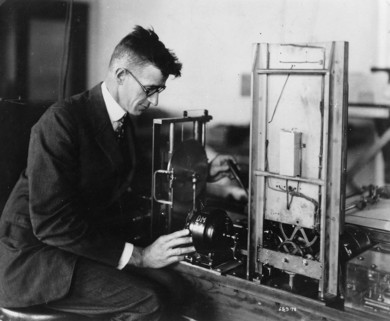Vannevar Bush
A memex is a device in which an individual stores all his books, records, and communications (...). It is an enlarged intimate supplement to his memory.
Vannevar Bush, As we may think, 1945
After studying and completing a doctorate at Harvard University, the American Vannevar Bush joined the renowned Massachusetts Institute of Technology (MIT) in 1919. As professor of electrical engineering he began developing several calculating machines in 1923. Initially they were used to solve differential equations and handle large amounts of data. After the USA entered the War, he was charged by President Roosevelt with leading the military research programme; this also included the Manhattan Project in which the atomic bomb was developed.
With his 1945 essay As we may think, Bush announced himself as one of the founding fathers of modern computer technology. In this work, he describes a working aid for storing all personal media and communications data which he called a memex. The template he used for the manner in which this machine was to function was the associative linking processes of the human brain. In an era of many outstanding scientists, he was the first to anticipate the complex network structure of the modern online world with his idea of individual encyclopaedic systems. After the War was over, Vannevar Bush was a vocal proponent of expanding state research promotion as a way of maintaining the military and technological hegemony of the USA.

